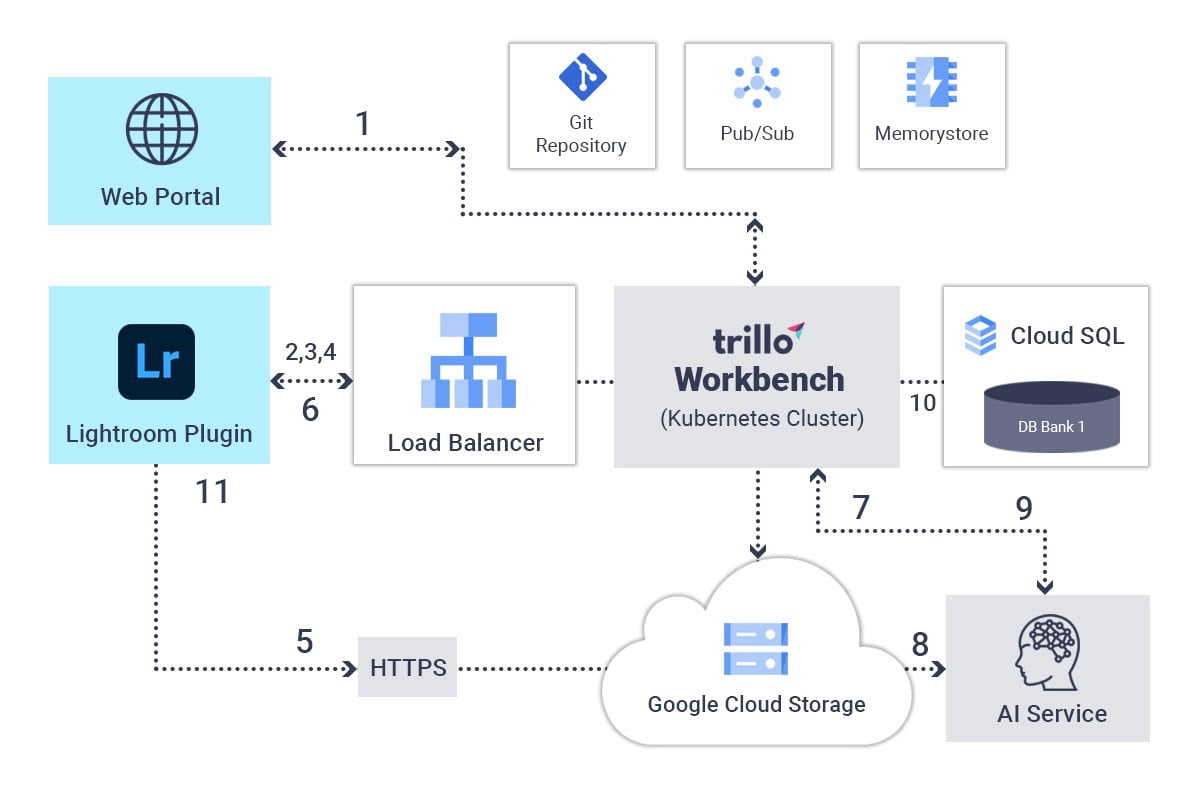AI-Driven Photo Editing Platform of Batch.ai
An enterprising photographer with years of photo editing experience knew that there has to be a better way to edit thousands of photos, such as giving a hint to an AI-driven system and letting it do the rest. In a typical week, Shawn Hawkins would team up with a geek from the valley, raise VC money, build an engineering team, and so on. Instead, he chose to work with a couple of Google partners (DevDigital, Trillo). The result is a new SaaS platform for AI-driven photo editing called Batch.ai.
This blog describes what the platform is and how it came into being.
As a word of acknowledgment, the partner’s ecosystem Google has created for its cloud platform is instrumental in letting an entrepreneur realize dreams without building a large engineering team.
How photographers worked before
Photographers use Adobe Lr. to edit photos manually. It is a painstaking process and may take days to weeks for a catalog with 1000s of photos. If the photographers wish to try out new creatives, they would repeat the manual process.
The new process using the Batch.ai platform
The new approach relies on an Adobe Lr. plugin. It starts with a photographer editing an ‘anchor’ photo according to her unique style. In a large catalog, she may edit several anchors. Next, Adobe Lr. plugin uploads the entire catalog (preview images) to the Google cloud. On the Google cloud, the AI-driven system computes settings of photos using Batch.io proprietary models. The plugin retrieves the settings of photos and applies them. For a catalog of 1000s of photos, the entire process takes about 30 minutes. A photographer can be creative and repeat the process for a different style.
Partner roles
The Batch.ai brought in the domain expertise to the table. DevDigital and Trillo played the following roles.
- DevDigital developed Adobe Lr. plugin.
- Trillo is responsible for the model training and deployment as a scalable inference service (using Google Kubernetes Engine). Trillo used its low-code platform (Trillo Workbench) to accelerate the end solution delivery.
- DevDigital also built a customer portal for user sign-up, sign-in, profile, and payment management.
Batch.ai platform architecture
The following diagram shows the components of the Batch.ai platform architecture.
The end to end process shown by the diagram above is as follows:
- A new user signs up using Web Portal and downloads the Adobe Lr. plugin.
- User upload catalog in the Adobe Lr.
- The user activates the Adobe Lr. Plugin (provided by BatchIO.ai and downloaded in 1).
- The user edits a few anchor images and triggers the process of AI-Driven editing.
- The plugin loads images to the Google Cloud via Trillo Workbench (an orchestration platform).
- Trillo Workbench makes an API call to compute the settings of the photos.
- Once the AI/ML service infers the photos’ settings using models, it returns back them to the plugin. The plugin applies the settings to the image to perform the effect of manual editing.
Conclusion
Google Cloud Platform and its partners’ ecosystem provide an optimal path to entrepreneurs build a cloud service. AI/ML modeling techniques are evolving by the day and helping domain experts innovate new ways of doing things. Trillo Workbench like low-code platforms eliminates the complexities of integrating cloud services, cloud architectures, and DevOps. By providing a customizable platform, it lets you evolve it into a domain-specific platform (in this case AI-Driven Photo Editing Platform of Batch.ai).
